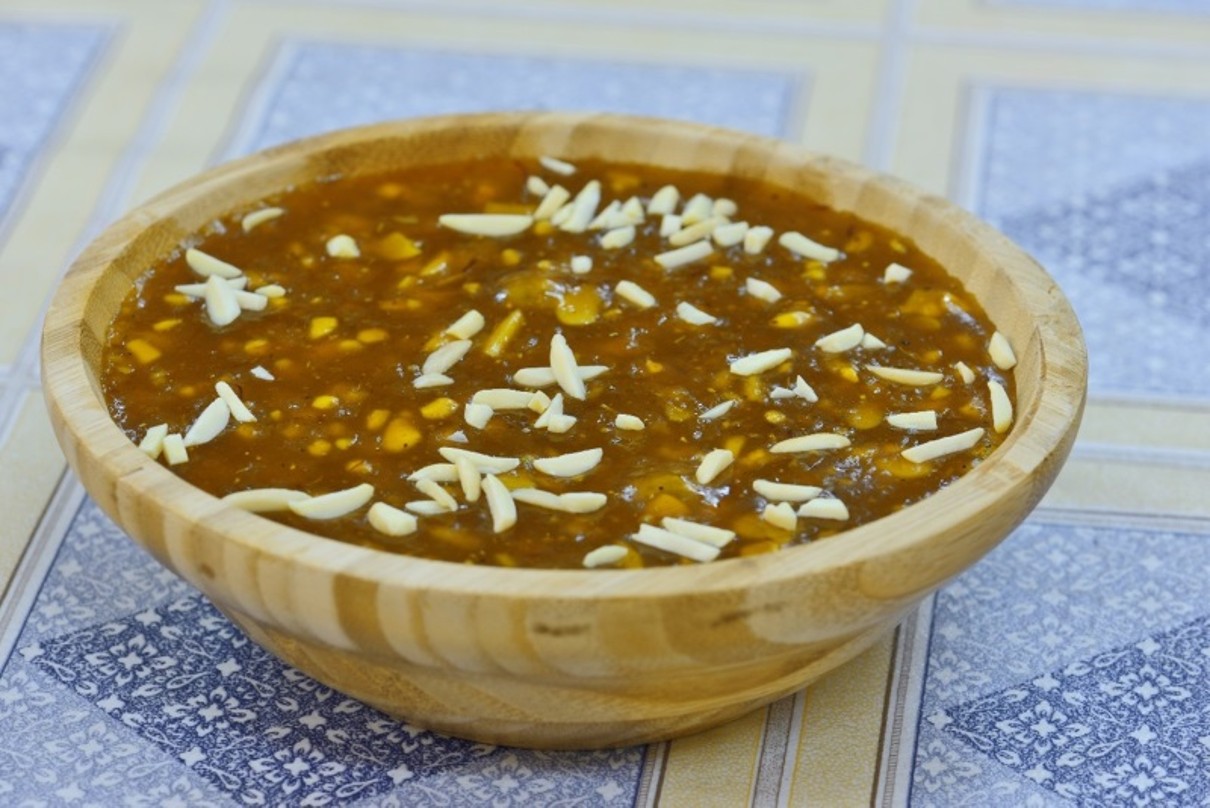Page content
Must-Tries for Foodies: Traditional Omani Dishes
Oman is a country known for its 5,000-year-old history, diverse landscapes, and the warm hospitality of its people. But beyond the cultural gems and majestic vistas, travellers to Oman are in for a culinary treat while exploring the country. Its most southern region Dhofar is famous for its treasure trove of exotic fruits, and weekends are celebrated across the country with beachside barbecues, a cherished local tradition. Not to forget, every festive meal commences with a tea or coffee ceremony, inviting guests to partake in age-old rituals of hospitality. Here are seven of the must-try traditional dishes to indulge in when travelling in Oman.
Shuwa
Shuwa is a particularly festive dish and symbolises both community and celebration. It is often served as a feast at the end of the fasting month of Ramadan. An underground pit functions as the Shuwa oven: covered with tiles or equipped with a metal drum, it can be found in most gardens of Omani families. To prepare the dish, lamb, goat or camel meat is traditionally marinated in a special spice mixture, filled with dates and nuts and finally wrapped in banana leaves. The meat is then buried in the Shuwa oven, which in turn is filled with hot coals and closed with a lid. The oven allows for particularly slow cooking, over a period of 24 to 48 hours, depending on the recipe, until the meat is tender and succulent, and is usually served with rice or bread.
Muthbe
Muthbe, a regional specialty in the southern region Dhofar, is in fact more of a cooking technique than a specific dish: this unique method involves the use of clean flat stones that are carefully arranged over a sizable campfire. Once the stones reach the ideal temperature, marinated meat is cooked upon them, traditionally camel meat. The stones with their exceptional heat-retaining properties swiftly draw moisture from the meat at the point of contact. After just a few minutes, the meat is cooked to perfection, crispy on the outside, tender on the inside.
Maldouf
No Omani meal is complete without Maldouf, a type of flatbread known for its delicate layers and inviting aroma. Made from a blend of flour, water, and ghee, these flaky bread rounds are cooked on a hot griddle. The thin layers of the Maldouf are created through a meticulous process of rolling and folding the dough, resulting in a unique texture. Maldouf is often enjoyed with honey, cheese, or savory stews, adding a bit of crunch to the Omani dining experience.
Harees
Harees is a popular Omani dish made from a combination of ground wheat and meat, often chicken or lamb. The dish is slow cooked with constant stirring and simmering, resulting in a creamy texture. The addition of spices, such as cumin and coriander, infuse Harees with a comforting warmth. Harees is often served as a pre-dawn meal during Ramadan to provide sustenance throughout the day, bringing families and communities together to celebrate.
Makbous
Makbous is Oman's answer to the pilaf, a dish made with rice, meat (usually chicken or lamb), and an array of spices, including cardamom and cloves. The dish is, if cooked properly, an aromatic blend of textures and tastes: The cooking process involves layering the rice with the meat and spices, allowing them to meld together into flavourful bites. The dish also includes the costly spice saffron, which can be shopped at decent prices in the Omani souks – if one has their haggling-skills in order.
Halwa
No Omani culinary experience is complete without Halwa. This traditional sweet treat, made from a mix of rosewater, saffron, nuts, and sugar, is a fragrant delight, often enjoyed with a cup of Omani coffee with its traditional taste of cardamom. The preparation of the delicacy is a carefully orchestrated process: The ingredients are cooked slowly in a large pot and stirred with an enormous wooden spatula until the confectionary reaches a velvety consistency.
Omani Chips Sandwich
Most Omani dishes are based on century-long traditions that continue to evoke interest among travellers. But new dishes also spring from the new generations – a fun dish to try is the Omani Chips Sandwich: Locals take pita bread, spread soft cheese on it, put the traditional savoury crisps “Chips Oman” on top and add hot sauce. The entire thing is rolled into a sandwich which makes it a comfortable and tasty snack, especially when travelling.
Further information on the Official Host Country of ITB Berlin 2024 can be found at www.experienceoman.om.

.svg)


